Typical schemes and rules for designing a heating system for a one-story private house
The heating system in a one-story house can be mounted according to various schemes. When choosing the best option, the project budget and the availability of fuels are taken into account.
As well as features of the structural elements of a private residential building: the area of the object, materials used in the construction, the presence of a warehouse for the installation of boiler equipment.
Let's see what rules should be followed when designing a heating system, and what actions it is better to refuse to avoid heating problems in the future.
The content of the article:
- Individual heating requirements
- Classification of heat supply systems
- Features of coolant circulation
- Single pipe heating system
- Two-pipe heating system
- Lower and upper wiring diagram
- Types of two-pipe horizontal layout system
- Rules for designing a heating system
- What information do masters need?
- Conclusions and useful video on the topic
Individual heating requirements
The heating unit must be planned so that it matches the architectural design of the building. The location of all functional elements should be as convenient as possible for operation and scheduled repair work without violating the structural integrity of the house.
Basic requirements for modern heating systems:
- energy efficiency
- simple installation and maintenance;
- high heat transfer rates;
- full / partial independence from electricity.
Before proceeding with the design of heat supply, you need to choose the most suitable and economical heat source - stove or fireplace, water, steam, air or electric heating.
And it remains to be decided on the schematic diagram of the pipe wiring for heating a one-story private house, accurately calculate the power and objectively assess the load on the system, taking into account all the features.
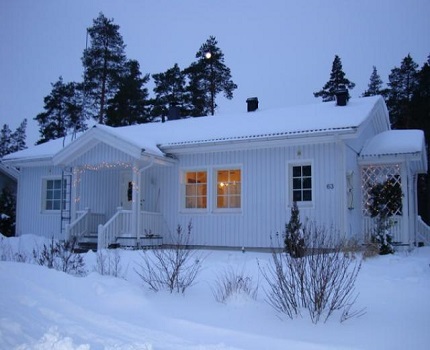
A correctly installed distribution heating line makes it possible to organize uniform heating of air in all rooms of a private house in a minimum amount of time.
Classification of heat supply systems
In one-story buildings, cottages, houses, autonomous heating systems or dependent on external power sources are mounted. The former operate on liquefied gas, diesel, and solid fuel. The second - need to be connected to the mains or main gas pipeline.
Another difference between the options for heat supply is the need for human participation in the operation of the equipment.
Automated control systems do not require round-the-clock monitoring or manual configuration. Maintaining a comfortable temperature inside the building is provided by thermostats and temperature sensors.
These devices regularly monitor changes in temperature indicators, which allows the heating system to take into account all factors that directly affect the temperature in the room: solar heat, radiation from household appliances, heating from lamps for lighting, etc.
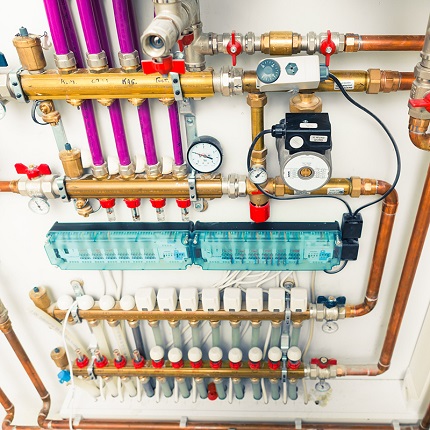
Automation makes it possible to change the temperature in the house at different times of the day.
When classifying heating systems, take into account such signs as:
- type of heat carrier - air, water or steam, combined;
- type of fuel used - gas, electric, peat, wood, pellet, coal;
- way to transport working fluid - with natural and forced circulation;
- coolant movement - passing and deadlocks;
- way to connect boiler equipment - one-pipe and two-pipe layout;
- wiring diagram - with a vertical or horizontal arrangement of the distributing line, upper or lower, combined.
In multi-apartment buildings, the vertical layout is dominant, while in single-story buildings, a horizontal one is found. Combined heat supply methods prevail in high-rise buildings.
Features of coolant circulation
In private low-rise buildings, it is effective to install heating systems with heat transfer fluid. For this, the pipes are filled with non-freezing antifreeze or water.
The movement of the working fluid along the heating circuit can be carried out in natural or forced mode. Water heated by the heat generator enters the distribution pipe, and then to the radiators. This part of the circuit is called forward stroke.
After getting into the batteries, the heat-transfer fluid cools down and quickly goes to the boiler for heating. This gap is called a reverse stroke. To speed up the transportation of the coolant inside the system, a circulation pump is mounted.
Natural fluid movement
Horizontal pipelines are sloped in the heating circuit, thereby creating conditions for the movement of the working fluid under the influence of gravity.
They also install an open expansion tank - a special tank for receiving excess water in order to ensure the correct and safe operation of all nodes of the engineering network.
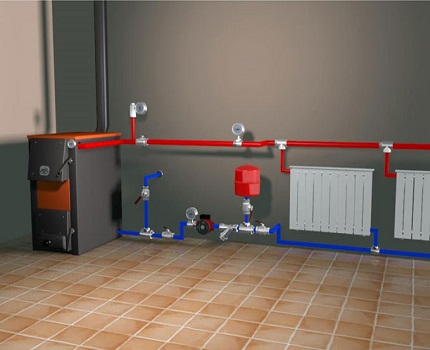
Heating systems with natural circulation function due to different densities of heated and cold coolant. According to the laws of physics, hot water rushes up.
In a closed circuit, cold flows inevitably displace heated ones, forcing them to move in the opposite direction from the heat source. A moving fluid with kinetic energy potential passes through all the batteries, giving off heat. After returning to the boiler equipment, the cycle repeats.
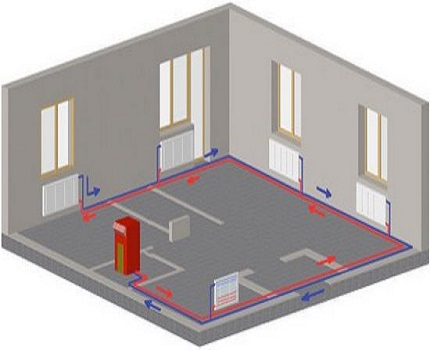
To gravity design fully work, the boiler is installed below the central axis of the main circuit. Typically, the heat generator is mounted in the recess of the floor, but sometimes in the basements, with the exception of gas units.
The supply pipe from the boiler is raised in the vertical direction to the highest possible point. This creates additional space in a closed loop for dispersing the working fluid.
The number of necessary shutoff valves in gravity heating systems is minimized. Strict requirements are imposed on the diameter of the installed pipes - it must be at least 32 mm. Since the speed of movement of water in the circuit is insignificant, in order to increase the heating efficiency, only large-diameter pipes are mounted.
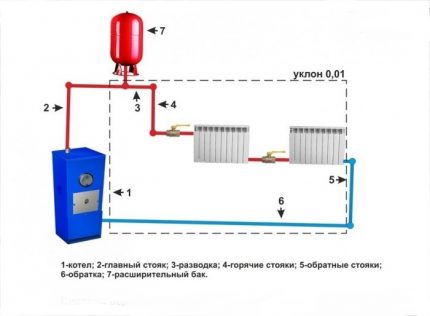
An autonomous heating system, the principle of which is based on the natural way of circulating the heat-transfer fluid, is the simplest. Such a home heating project is easy to put into practice. However, this option is only suitable for small-sized private buildings, since the length of the heating circuit is limited to 30 meters.
The main advantage of gravity flow systems is complete independence from electricity. For more information about heating systems with natural circulation of the coolant, read Further.
Forced circulation in the system
For private buildings with a total area of more than 60 square meters. m. design heating with forced transportation of the working fluid. In a closed loop set circulation pumpin order to provide accelerated movement of the hot heat carrier to the radiators, and the cooled to the heat generator.
Installation of pipes in the system can be performed without bias in the horizontal plane. Water moves due to the difference in pressure indicators that occurs in the section of the line between the forward and reverse fluid flow.
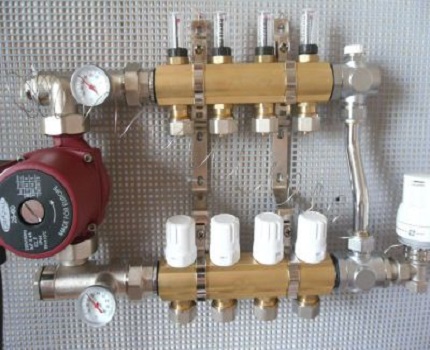
A significant drawback of a coercive system is its volatility. For the constant circulation of water in the circuit, continuous operation of the pump is necessary, and its performance directly depends on the power supply.
In the event of a sudden outage, the equipment simply will not be able to pump fluid. Therefore, experts recommend the additional installation of backup generators capable of providing a stable, uninterrupted heat supply even in unforeseen situations.
Such schemes can be used when installing heating in buildings of any size. It is only necessary to choose a circulation pump with suitable power indicators and provide power.
Single pipe heating system
In the house, only one trunk line is installed under the floor or above it with a serial connection of batteries. In such a heating circuit there is no distribution between the supply pipe and the return pipe.
Along the perimeter of a single-story building, only one pipe of circular cross section with a diameter of at least 32 mm is mounted, which is conditionally divided in half.Half outgoing from the heat generator is called supply, and the second part of the main is called return. Using a welded or seamless pipe of small diameter, radiators / convectors are mounted in the loopback.
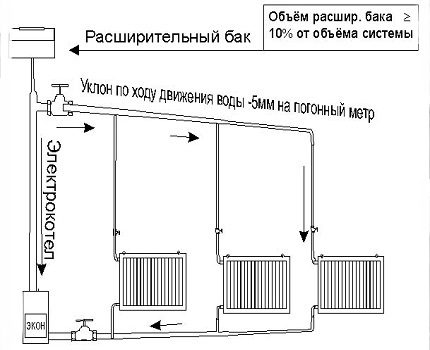
The one-pipe scheme includes the following functional elements:
- heat supply source (boiler);
- heating radiators;
- expansion tank;
- pipe routing elements.
The heated liquid flows alternately into the radiators, each time giving off part of its heat. After that, it is already chilled back to the boiler for the next heating cycle. Each battery loses heat and the last element in the chain remains the coldest in comparison with others.
There are several ways to optimize the performance of a single pipe system. You can optionally install special thermostatic valves for heat exchangers, balancing valves with adjustable hydraulic resistance or compact ball valves. Such equipment helps to normalize the heat supply to the batteries.
Another way is to increase the number of sections of each subsequent radiator in the heating circuit. And you can also install a circulation pump. The pump device is connected at the end of the return - the place where the working fluid has the lowest temperature.
The single-pipe heating option is easy to install and commission. Heat losses are minimized, since absolutely all communications are located inside the living rooms of a private house.
Such a scheme can be organized in the form of a system with horizontal wiring and forced movement of the coolant or a vertical heating network with natural, forced or combined movement of the working fluid.
We also recommend reading our other material, where we examined in detail single pipe heating system for a private house.
Horizontal wiring method
Installation of the supply pipe in a horizontal plane is performed with the desired slope in the direction of movement of the heated water. In this case, all the batteries around the perimeter of the house should be installed at the same level. For air exhaust from radiators use Mayevsky taps or automatic air vent devices.
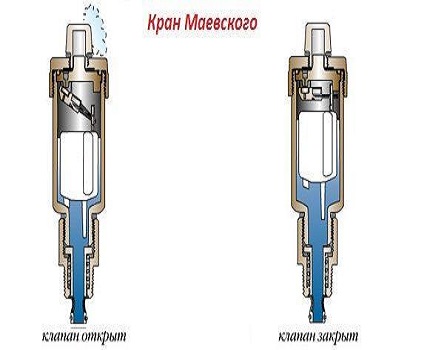
The horizontal line can be installed in the floor structure itself or mounted above it. To avoid heat loss, in the first case, it is necessary to insulate the pipes.
Vertical layout
In such a system, the transportation of liquid coolant provides a natural circulation mode, and therefore there is no need to install an additional pump. Non-volatility is the main plus of a one-pipe vertical heating system at home.
With this method of wiring, the working fluid, heated to a predetermined temperature, moves up the riser, after which it enters the batteries through the distribution pipes. The effectiveness of the operation of a vertically arranged single-pipe system is achieved by installing a pipe at a slope, as well as installing large-diameter pipes.
Of course, a massive pipeline will not decorate the interior of living rooms. But this obvious drawback can be avoided by installing circulation equipment in the system.
Two-pipe heating system
The main difference between the two-pipe heating system of the house is the presence of one pipe for supplying water and another one for its return.Moreover, hot liquid enters the first, and the already cooled coolant goes to the boiler along the second.
Each battery is served by both a feed and a return riser. This makes it possible to regulate the amount of heat received by individual radiators. If you do not take into account the cooling of the coolant in the pipes, it turns out that all the heating elements receive liquid with the same temperature.
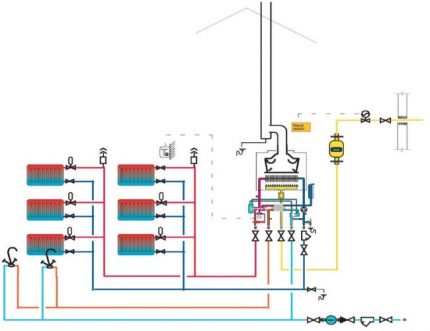
The two-pipe heating circuit includes:
- heat generator;
- batteries
- expansion tank;
- pipes;
- shutoff valves and special devices for air discharge.
From the boiler to the expansion tank there is a pipe with hot water. Then it is connected to the distribution line in the heating circuit. In addition, an overflow pipe is inserted into the tank for the timely removal of excess coolant into the sewer system.
Pipes coming out of the bottom of the heat exchangers combined into one return line. On it, the cooled coolant returns back to the boiler. The return pipe is laid strictly parallel to the upper pipes. It must pass through all the rooms where the hot water supply line is laid.
Coercive two-pipe systems are considered the most effective for single-story houses and cottages, but they can provide heat for large two-story buildings.
And these allow you to warm up the room evenly and very quickly and maintain different temperature conditions in the rooms. In addition, double-circuit execution makes it possible to organize not only heating the house, but also hot water supply.
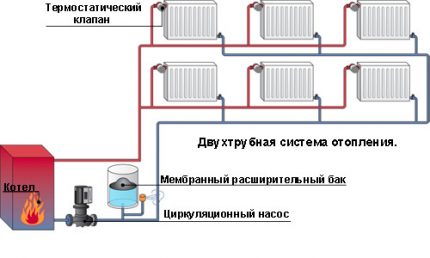
Closed heat supply systems with forced circulation are mounted in two versions - with horizontal and vertical wiring.
The first method is implemented in single-story houses with a long pipeline. In such situations, connecting water radiators to the heating circuit with horizontal wiring is the best solution.
In the second version of the wiring, the riser is located vertically, which allows you to use the circuit even in high-rise buildings. In such systems, air does not accumulate, since the resulting bubbles instantly rise in the vertical direction, directly into the expansion tank.
Lower and upper wiring diagram
With the lower wiring of the system, the trunk is laid in the basement or basement. And also installation of pipes under the floor is allowed. The coolant enters the heating equipment from the bottom up.
The gas mixture is removed through a special overhead line connected to the risers. In case of unforeseen emergencies, the return and supply risers are equipped with special cranes for shutting down.
To implement the scheme with the upper distribution line, the expansion tank is mounted at the highest point of the pipeline. In the same place perform the branching network.
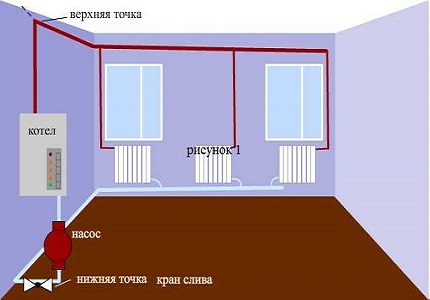
Types of two-pipe horizontal layout system
The most common heating option for a one-story residential building is a two-pipe horizontal heat supply system.
To organize such a heating circuit, the following schemes are used:
- tee or otherwise perimeter;
- collector, otherwise radiation.
According to the tee scheme, pipes are connected by tees, pipelines are laid around the perimeter of the room, and are connected in series to devices. The coolant in the perimeter system flows from one battery to another, cooling somewhat along the way.
According to the movement of the heated and cooled coolant, the tee variants are divided into passing and oncoming ones. In a dead end design, hot and chilled water moves in different directions. In passing, the heated and waste coolant flows in one direction.
AT collector circuit From the central organ of the system, the collector, the pipes are led to each of the radiators, due to which the coolant enters all the devices at the same time.
The principle of the device resembles the sun's rays emanating from the heat flux distributor located usually in the center. In beam types of wiring, the coolant moves only in different directions.
Rules for designing a heating system
A well-designed project allows you to run the most efficient and multi-functional heating system.
It should work smoothly in the climatic conditions characteristic of a particular locality, where a one-story house is located, and be easy to operate.

The preparation of a quality project for heating a one-story house and the exact calculation of the system parameters are performed according to a specific plan:
- At the first stage, it is necessary to formulate a technical task taking into account all the requirements and details for the heating system.
- The second step is to collect information on a private property. Specialists must take all the indicators in order to draw up a diagram of the heating circuit.
- The next step is the calculation of heat transfer. To do this, you need to carry out calculations and choose the optimal heating scheme that will meet the basic building standards and individual customer requirements.
- When all calculations are completed, drawings are executed.
- The last stage is the design and delivery of the finished heating system project to the customer.
The main task of the design is to calculate the correct area of the heating equipment, to select the appropriate pipe diameters. And also to determine the performance of pumping devices, to calculate the places of injection of valves and system components. Therefore, it is advisable to entrust the process to professionals.
If you really want to carry out the calculations yourself, we recommend that you read the material where we carried out an example heating system calculation for a private house.
What information do masters need?
Before the installation work begins, you should discuss with the experts all the nuances, show your vision of the heating system.
Masters must provide:
- full information about the materials from which the roof of the building is made, floor ceilings, window structures;
- plan of a one-story house;
- drawings where plumbing nodes are marked.
The life of the heat supply system is affected not only by the quality of engineering design and skillful installation, but also by the selected materials, installed boiler equipment, as well as the rational use of heating elements.
Conclusions and useful video on the topic
In the video 3-D diagram, device and installation of a heating system for a single-tube arrangement in a one-story private house:
A schematic representation of a two-pipe polypropylene heating system, the correct connection of boiler equipment and the installation of heating radiators are shown in the video:
In the video, a typical heating project and calculation of heat losses are analyzed in detail:
Modern heat supply systems are integral attributes of the functioning of private houses, cottages and other construction projects. Professionally executed design is the key to effective, reliable and long-term trouble-free operation of an individual heating system.
If after reading the material there are questions about the topic of the article, you can ask them in the block below.You can also leave a comment there or share your own experience with other visitors to the site.

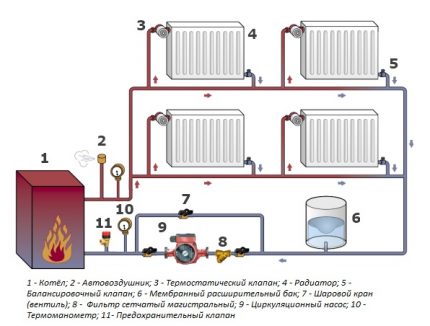
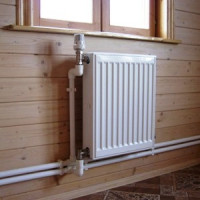 How to arrange the heating of a private house with your own hands: schemes for organizing an autonomous heating system
How to arrange the heating of a private house with your own hands: schemes for organizing an autonomous heating system 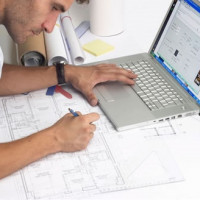 Calculation of the heating system of a private house: rules and examples of calculation
Calculation of the heating system of a private house: rules and examples of calculation 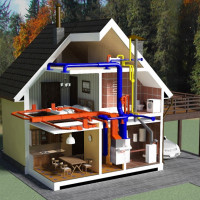 Cottage heating: schemes and nuances of organizing an autonomous heating system
Cottage heating: schemes and nuances of organizing an autonomous heating system 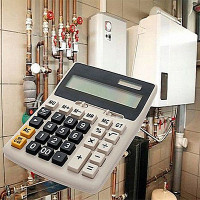 Which is cheaper: gas or electricity? Arguments for choosing a practical option for a private house
Which is cheaper: gas or electricity? Arguments for choosing a practical option for a private house  Hydraulic calculation of the heating system on a specific example
Hydraulic calculation of the heating system on a specific example 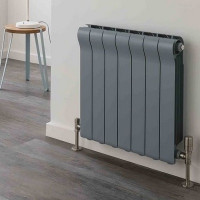 Calculation of a single-pipe heating system: what to consider when calculating + practically an example
Calculation of a single-pipe heating system: what to consider when calculating + practically an example  How much does it cost to connect gas to a private house: the price of organizing gas supply
How much does it cost to connect gas to a private house: the price of organizing gas supply  The best washing machines with dryer: model rating and customer tips
The best washing machines with dryer: model rating and customer tips  What is the color temperature of light and the nuances of choosing the temperature of the lamps to suit your needs
What is the color temperature of light and the nuances of choosing the temperature of the lamps to suit your needs  Replacement of a geyser in an apartment: replacement paperwork + basic norms and requirements
Replacement of a geyser in an apartment: replacement paperwork + basic norms and requirements
Hello. I have a one-story private house. I want to install two-pipe heating from a wood boiler. The upper pipe (feed) will pass under the ceiling.
What are the nuances during installation and where should the expansion tank of the membrane type be installed? Do you need an unloading and check valve and where are they installed? And also, do I need a crane to bleed air at the high point? Thanks in advance.